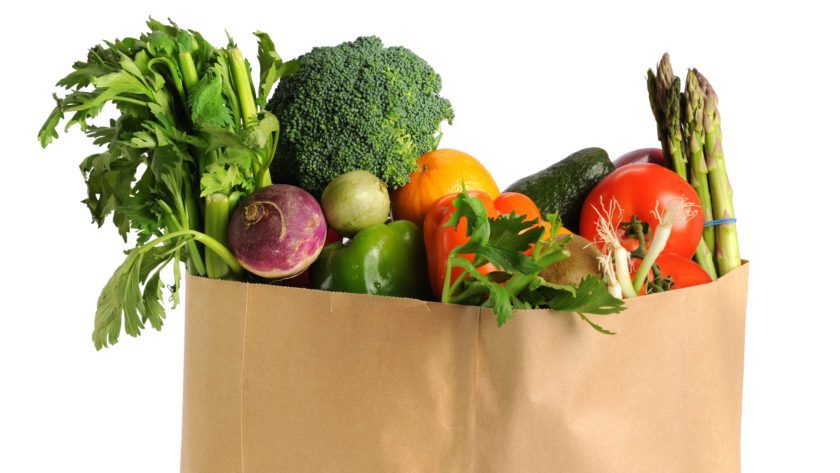You just returned from the Farmer’s Market, arms overflowing with fresh, seasonal produce that need to go in the frig fast. Do you randomly stash them in the produce drawer? That is, do you put them wherever they fit… only to find that a few days later your greens are wimpy, berries are moldy, and your cucumbers are shriveling? If this sounds familiar, here’s how to store your bounty to maintain their optimal freshness.

Those drawers in your refrigerator, a.k.a. humidity drawers or produce crispers, actually have a purpose. Notice the humidity controls ranging from low to high on each drawer. Do you know what they mean?
These settings aren’t anything fancy. They simply open or close a window in the drawer. For the low humidity setting, the window is completely open; for the high humidity setting, it is completely closed. And here’s why…
The Gassy Offender
Ethylene gas is produced naturally and released by many fruits and veggies. It causes:
- Cells to degrade
- Fruit to ripen (become softer and sweeter)
- Leaves to go limp
- Seeds or buds to sprout
Knowing which items are ethylene-gas producers and which are sensitive to the gas, you’ll never toss your apples in with your lettuce again. It’s all about the gas!
What Goes in the Low-Humidity Drawer (“Low Rot”)

1. Produce that IS NOT sensitive to moisture loss.
2. Produce that emits ethylene gas. When the window is open, the gases escape, and fruits and vegetables won’t spoil prematurely.
Here are some common fruits and vegetables to keep in the low-humidity drawer (window open):
- Apples
- Apricots
- Avocados
- Bananas (ripe)
- Blueberries
- Cantaloupes
- Cherimoyas
- Cranberries
- Figs
- Grapes
- Green onions
- Guavas
- Honeydew melons
- Kiwis
- Mangoes
- Mangosteen
- Nectarines
- Mushrooms
- Okra
- Papayas
- Passion fruit
- Peaches
- Pears
- Peppers
- Persimmons
- Plantains
- Plums
- Potatoes
- Prunes
- Quince
- Squash
- Tomatoes
What Goes in the High-Humidity Drawer (“High Wilt”)
 1. Produce that IS sensitive to moisture loss (things that wilt). When the window is closed, the water vapor is held in the drawer. Moisture will keep the greens crisper and fresher longer.
1. Produce that IS sensitive to moisture loss (things that wilt). When the window is closed, the water vapor is held in the drawer. Moisture will keep the greens crisper and fresher longer.
2. Produce that is sensitive to ethylene gas.
Here are some common fruits and vegetables to keep in the high-humidity drawer (window closed):
- Asparagus
- Bananas (unripe)
- Belgian endive
- Blackberries
- Broccoli
- Brussels sprouts
- Cabbage
- Carrots
- Cauliflower
- Cucumbers
- Eggplant
- Endive
- Garlic
- Green beans
- Green onions
- Herbs (cilantro, dill, parsley, thyme)
- Leafy greens (arugula, basil, kale, lettuces, spinach, Swiss chard, watercress)
- Leeks
- Okra
- Onions
- Parsley
- Peas
- Peppers
- Raspberries
- Squash
- Strawberries
- Summer squash
- Sweet potatoes
- Watermelon
NOTE: Citrus fruits (limes, lemons, oranges) tend to like “medium” humidity.
![]() Karen’s Fit Tip: Keep your drawers at least two-thirds full to keep them working at their best. It’s great incentive to have a fresh supply of produce handy! Also, to speed up ripening, place an ethylene gas producer, such as a ripe apple, in a paper bag or closed container with unripe fruits, and they’ll be ripe and ready to eat in no time!
Karen’s Fit Tip: Keep your drawers at least two-thirds full to keep them working at their best. It’s great incentive to have a fresh supply of produce handy! Also, to speed up ripening, place an ethylene gas producer, such as a ripe apple, in a paper bag or closed container with unripe fruits, and they’ll be ripe and ready to eat in no time!

